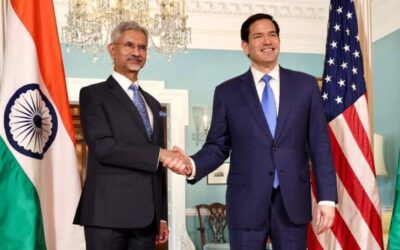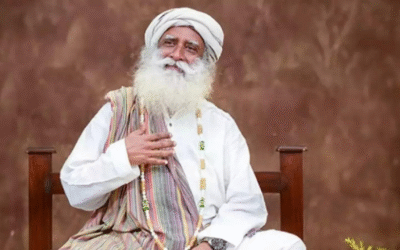Cabinet approves ₹1 trillion each for employment, R&D

The employment-linked incentive (ELI) scheme, aimed at generating 35 million jobs in two years, will provide direct financial benefits up to ₹15,000 to 19.2 million first-time employees, Union minister of information and broadcasting Ashwini Vaishnaw said.
“This overall encourages youth to look at formal wage-led jobs instead of part-time, gig or other informal means of livelihood. Coming at a time of reduced interest rates and income tax reduction at entry level, it should be both beneficial for youth to come into employment as well as have a lot more disposable income for consumption,” noted Lohit Bhatia, president-workforce management at Quess Corp, one of India’s largest staffing firms.
First-time employees are those who register with the Employees’ Provident Fund Organisation (EPFO) for the first time. Employees with annual salaries up to ₹1 lakh will be eligible.
Establishments, which are registered with EPFO, will be required to hire at least two additional employees (for employers with less than 50 employees) or five additional employees (for employers with 50 or more employees), on a sustained basis for at least six months.
The benefits would be applicable to jobs created between 1 August 2025 and 31 July 2027. For the manufacturing sector, incentives will be extended to the 3rd and 4th years as well.
For an additional employee with an EPF base wage of up to ₹10,000, the employer will receive up to ₹1,000 proportionately. For an additional employee with an EPF base wage between ₹10,000 and ₹20,000, the employer will receive ₹2000. Similarly, for an additional employee with an EPF base wage of over ₹20,000 but under ₹1 lakh, an employer will get ₹3,000 as incentives.
The ELI scheme was originally mentioned in the FY25 budget as part of five schemes to facilitate employment, skilling and other opportunities.
A back-of-the-envelope calculation shows that an employer in the non-manufacturing sector hiring 100 additional employees could receive up to ₹72 lakh over two years, while a manufacturing sector employer could get ₹1.44 crore over four years.
The industry welcomed the ELI scheme. “By incentivizing first-time workers, boosting manufacturing, and encouraging employer participation, it reflects smart, inclusive policymaking. Its emphasis on dignity, security, and formalization aligns deeply with industry aspirations, said Anish Shah, a former president of Federation of Indian Chambers of Commerce & Industry (Ficci).
“It tackles two of the biggest challenges in India’s labour market—youth unemployment and informal hiring,” pointed out Kartik Narayan, chief executive officer at staffing firm TeamLease Services.
However, an HR consultant said that ₹1 lakh annual salary amounts to about ₹8,000 per month. “This amount often doesn’t meet the minimum wage bracket and the candidate has to be extremely unskilled. In a job market where the supply of skilled workforce is available, why would the company look for unskilled talent and then invest in them to see a return on their investment,” the consultant said on the condition of anonymity.
Bino Paul, professor at the School of Management and Labour Studies at Tata Institute of Social Sciences said that the scheme has the potential to generate positive spillovers. “If the policy is governed constructively, it augments the productive employment opportunities. Thus, it will foster India’s progress towards Sustainable Development Goal (SDG) 8, creating a symbiotic link between decent work and economic growth,” he said.
According to Rahul Ahluwalia, founding director at Foundation of Economic Development, the scheme focuses on India’s biggest asset—labour. “We have regulatory costs which often disincentivize businesses from hiring more. A push to add employees to the roster is likely to reduce that burden on businesses, but we must also cut regulatory costs so businesses can thrive on their own,” Ahluwalia said.
The scheme is expected to fuel demand for labour, said Neeraj Hatekar, professor at the School of Development, Azim Premji University. “But demand for labour is derived demand, it comes from the rest of the economy. “If the rest of the economy does well, more people are employed.”
The RDI scheme
The RDI scheme will encourage research in sunrise sectors as well as domains relevant for economic security, strategic purpose, and self-reliance. Its key purpose is to provide long-term financing or refinancing with long tenors at low or nil interest rates to spur private sector investment in RDI.
Mint reported on 16 April that the Centre was considering a $4-billion incentives scheme to promote the development of patents and design innovation in critical electronics. The programme is a part of the overall RDI scheme approved on Tuesday.
This comes at a time when India’s gross expenditure on R&D has doubled from ₹60,196 crore in 2010-11 to ₹127,380 crore in 2020-21. However, the share of expenditure on R&D as a part of the country’s total economic output has consistently fallen from about 0.83% in 2009-10 to 0.64% in 2020-21.
Ajai Chowdhry, chairman of industry body Epic Foundation and cofounder of HCL, said that domestic R&D investment “has long been a concern, remaining significantly lower than 2-5% invested by nations like the US, Japan, and China.” The Centre said it will seek to boost the ratio of expenditure on R&D to India’s total economic output—which fell to 0.64% in FY21, from 0.83% in FY10, echoing Chowdhry.
“The private sector’s contribution has been particularly limited. The government’s approval of the RDI scheme is to encourage the private sector to pick up strategic areas, and create products for both India and the global market. This fund will also enable translational research by the private sector. We need belief in our own capabilities, invest in secure and indigenous infrastructure, and become a product nation by leading with conviction, not dependency. The R&D fund will play a pivotal role in realizing this vision,” he added.
Ashok Chandak, president of fellow industry body India Electronics and Semiconductor Association, added that the fund can boost “high-impact R&D opportunities in semiconductors, electronics systems, and embedded technologies—enabling the creation of robust pipelines for product commercialization and deep-tech venture growth.”
The scheme, and its ₹1-trillion outlay, will be governed broadly by the Anusandhan National Research Foundation (ANRF), chaired by Prime Minister Narendra Modi.
“The RDI scheme will have a two-tiered funding mechanism. At the first level, there will be a special purpose fund (SPF) established within the ANRF, which will act as the custodian of funds. From the SPF funds shall be allocated to a variety of second-level fund managers. This will be mainly in the form of long-term concessional loans,” the statement added.
Sports policy
Vaishnaw said the new sports policy that Union cleared on Tuesday is aimed at elevating India to the top five rankings of all sporting nations. The policy will focus on scouting and nurturing talent, attracting international sports events to India, promoting sports manufacturing, and making sports a key part of the national education policy.
“There will also be leagues for different sports created under the policy, to make Indian sportspersons competitive,” said Vaishnaw.







